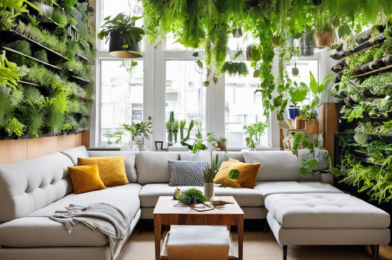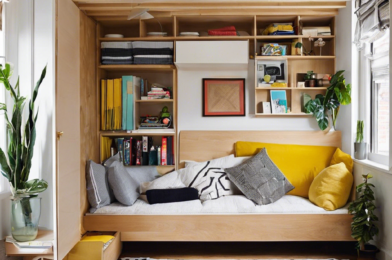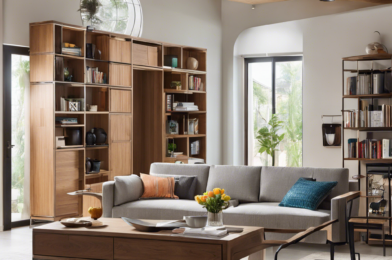Bringing nature into our homes is an age-old practice, with houseplants and floral arrangements adding a touch of the outdoors to our living spaces. But in today’s urban jungle, where space is often limited and concrete reigns supreme, how can city dwellers create a natural oasis? The answer lies in vertical gardens – a modern twist on horticulture that is taking small urban homes by storm.
Vertical gardening involves growing plants upwards instead of outwards, utilizing walls, trellises, and other vertical structures to create a living, breathing work of art. Not only do these gardens beautify our homes, but they also bring a host of benefits, from improved air quality to enhanced mental well-being.
For those living in compact urban residences, vertical gardens offer a space-saving solution. By making use of underutilized wall space, these gardens free up precious floor real estate, allowing city dwellers to enjoy the beauty and benefits of nature without sacrificing valuable living area.
The versatility of vertical gardens is another drawcard. They can be as simple or as intricate as desired, ranging from a single wall of greenery to a multi-layered, three-dimensional ecosystem. The plants themselves can be arranged in a variety of ways, from cascading vines to neatly organized patterns, creating a unique and personalized piece of living decor.
One of the most appealing aspects of vertical gardens is their ability to transform dull, sterile walls into vibrant, organic features. With a carefully curated selection of plants, an ordinary room can become a lush, tropical paradise or a serene, Zen-like retreat. The visual impact of these gardens is undeniable, adding color, texture, and depth to any space.
But vertical gardens are more than just aesthetically pleasing. They also offer a host of functional benefits. One of the most significant advantages is their ability to improve air quality. Plants act as natural air purifiers, absorbing carbon dioxide and releasing oxygen, while also filtering out common indoor pollutants such as formaldehyde and benzene.
In addition to their air-purifying properties, vertical gardens can also help regulate humidity levels, creating a more comfortable and healthy indoor environment. Certain plants, such as ferns and peace lilies, are particularly effective at increasing humidity, which can be beneficial in dry climates or during the winter months when heating systems can sap moisture from the air.
The therapeutic benefits of spending time in nature are well-documented, and vertical gardens bring a slice of that tranquility into our homes. Being surrounded by greenery has been shown to reduce stress, enhance mood, and improve overall mental well-being. Vertical gardens can create a sense of calm and connection to nature, even in the heart of a bustling city.
Caring for a vertical garden also provides an opportunity to engage in a rewarding hobby. Tending to plants can be a form of meditation, requiring patience, attention, and a gentle, nurturing touch. The act of gardening has been linked to improved mental focus, reduced anxiety, and a sense of accomplishment as one watches their garden flourish and grow.
Vertical gardens offer a unique way to display one’s creative flair and showcase individual style. The design possibilities are endless, allowing homeowners to express their personality and create a one-of-a-kind living space. From the choice of plants to the arrangement and overall design, each vertical garden is a unique reflection of its owner.
In addition to their aesthetic and therapeutic benefits, vertical gardens also contribute to a more sustainable urban environment. They provide insulation, helping to regulate indoor temperatures and reduce energy consumption. The plants also offer a natural form of sound absorption, creating a quieter and more peaceful indoor space.



